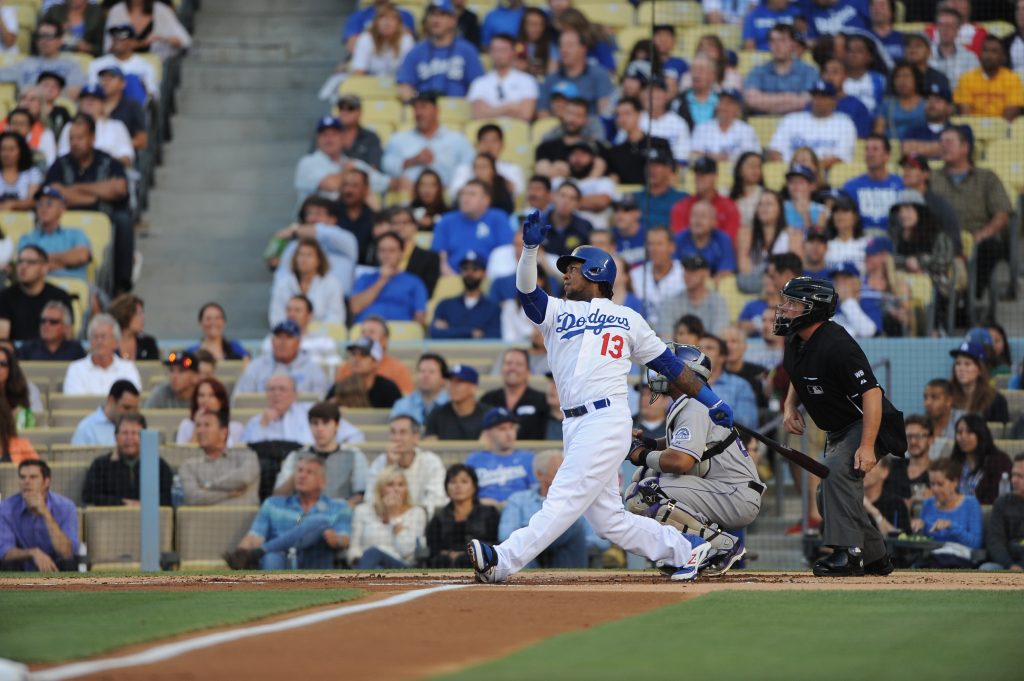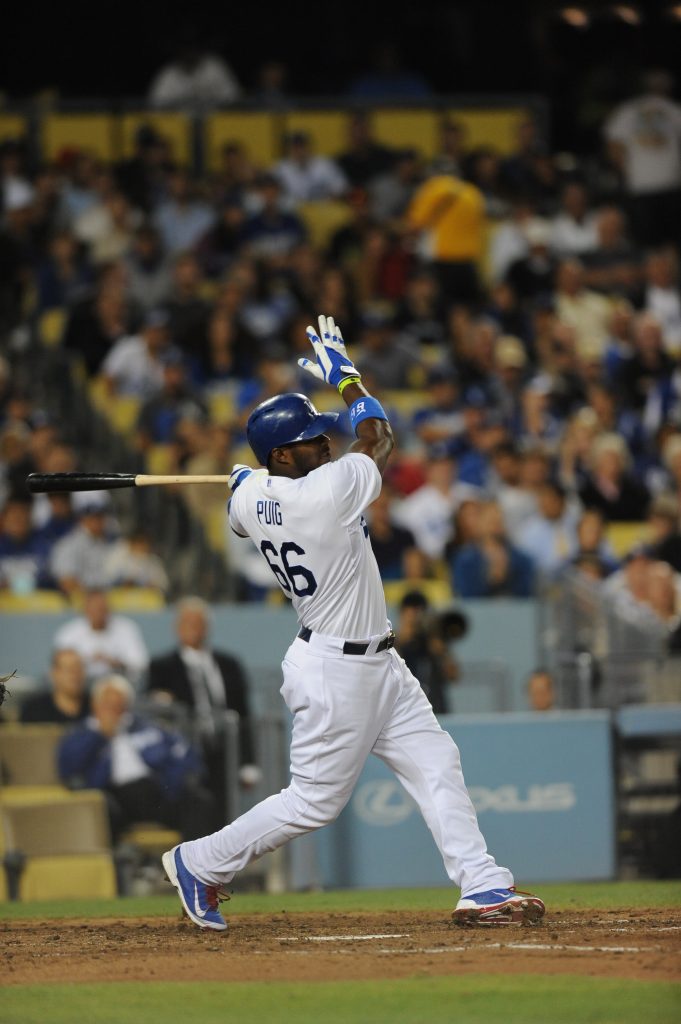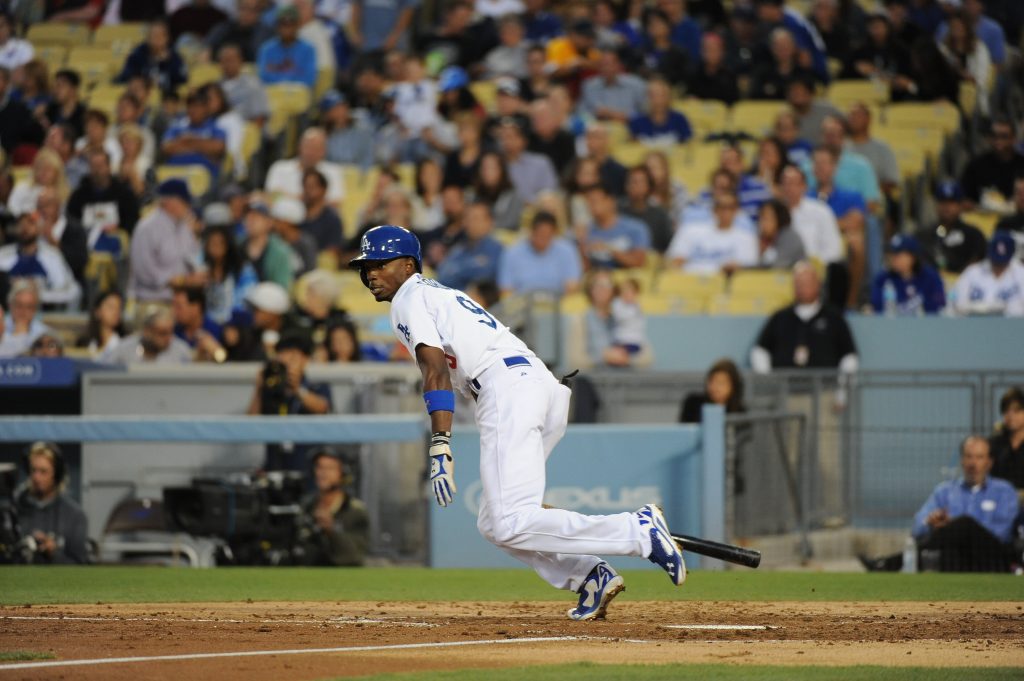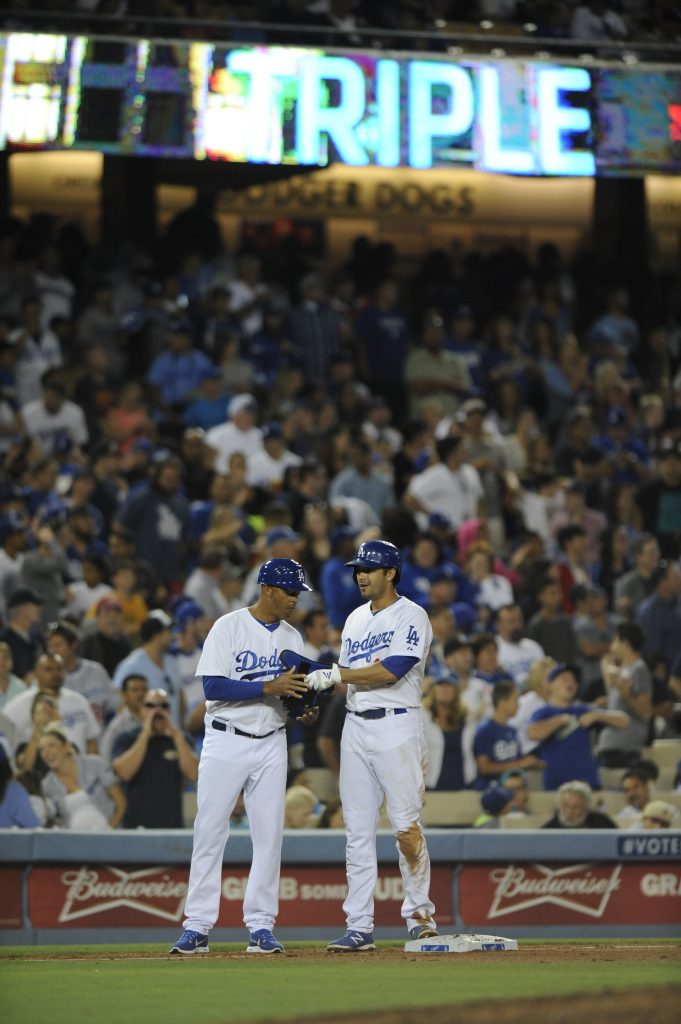
Hanley Ramirez had a .404 on-base percentage with runners in scoring position heading into the All-Star Break, despite a 1-for-9 mark with the bases loaded. (Jon SooHoo/Los Angeles Dodgers)

Yasiel Puig has a 1.013 OPS with runners in scoring position this year, but is 0 for 6 with the bases loaded. (Jon SooHoo/Los Angeles Dodgers)
By Jon Weisman
Ducks on the pond, stranded. It’s enough to make you quack up.
Short of the final out of a loss, there’s hardly a worse feeling in baseball for an offense than failing to cash in on scoring opportunities.
In fact, the sight of a team stranding runners in scoring position is so unbearable that everyone, from fans to the media, usually thinks of their team as a disappointment in clutch situations — even when that team is doing all that can be expected. It’s certainly no different if you’re following the Dodgers.
Heading into the All-Star Break, the Dodgers weren’t known as a clutch team — if anything, they were dogged by a rather bizarre pileup of failings in bases-loaded situations, in which they had gone 11 for 63 (.175) with as many hit-by-pitches (two) as walks.
Yet with runners in scoring position, the Dodgers had the highest on-base percentage (.354) in the Majors. By that measure, Los Angeles was home to the most clutch team in the baseball.
You could even argue that the Dodgers, like the prototypical when-the-chips-are-down hero, turned it up when the pressure was on, given that their offensive stats were better with runners in scoring position than with the bases empty.
But even here, one has to be careful with how to interpret these numbers.
Fluke city
The more you dive into analyzing specific situations, the more the statistics succumb to the frailties of small sample size.
Consider the following Dodger stats (through games before the All-Star Break):
The game situation PA BA OBP SLG OPS BB SO HR BABIP Second and third 71 .375 .451 .643 1.094 11 15 4 .415 Bases are loaded 70 .175 .214 .238 .452 2 16 0 .220
In virtually the same number of opportunities, the Dodger offense is more than twice as effective with runners on second and third vs. the bases loaded. (Somehow, the same team that is tops in the NL with runners in scoring position is at the bottom with the bases full.)

Leadoff hitter Dee Gordon has thrived with runners in scoring position, delivering a .411 on-base percentage. (Jon SooHoo/Los Angeles Dodgers)
The difference in walks can easily be chalked up to first base being open — a base on balls in that situation helps set up a potential force out or double play (four of the 11 walks, in fact, were intentional). And certainly, it’s frustrating that the Dodgers haven’t been able to hit a single grand slam in nearly 70 opportunities.
But should the Dodger runner on first get himself picked off, in order to increase the Dodgers odds of scoring? Hmm, probably not.
The biggest reason for the difference in the two situations is one that is mostly out of the Dodgers’ control: batting average on balls in play. When the Dodgers have made contact, they’ve been far more fortunate in 2014 at finding spots with runners on second and third than with the sacks full. Given the way that BABIP fluctuates, that has little to do with skill, temperament or courage, and is simply a small-sample statistical oddity.
Even across Major League Baseball, performance with runners on base deviates by a bunch, year to year. Last year, St. Louis led the Majors in batting with the bases loaded, with a .935 OPS. This year, in the first half of the season, with much the same personnel, the Cardinals were 22nd, with a .627 OPS.
Downs and ups
Expectations for teams to produce with runners on base also depend on some pitching realities. For every pitcher that might be on the ropes, you might also see pitchers who will bear down — if not a new, fresh pitcher altogether.
Another reason that the Dodgers might be underrated with runners on base is this: They might fail more often because they have more opportunities to fail.

Sometimes the biggest hit comes with the bases empty, such as Andre Ethier’s leadoff triple June 30. Ethier then scored the only run of the game that put the Dodgers in first place in the NL West. (Jon SooHoo/Los Angeles Dodgers)
Despite leading the league in batting average with runners in scoring position, the Dodgers had made more than 600 outs. That’s just a lot of disappointment to sit through, no matter how you slice it — more outs than all but four other NL teams.
But you don’t get those outs without the chance to make them. And no team in the first half of the 2014 season got a rally going more frequently than the Dodgers, who had a .325 OBP with the bases empty.
Put it all together, and the Dodger offense led National League in the first half of the 2014 season in such advanced statistics as weighted runs created and wins above replacement (according to Fangraphs). At a minimum, despite its flaws, it was one of the best offenses in the NL — if not the best — with runners in scoring position as well as overall.
Of course, no matter the stats, the Dodgers will ultimately be judged on wins and losses, particularly in the second half of the season and ideally in October.




oldbrooklynfan
Maybe it’s just me but I notice that people talk about RISP more after a loss. Many games when the Dodgers don’t do well with RISP but win, nothing is said about it. The same goes if they do well with RISP and lose, it’s hardly mentioned.